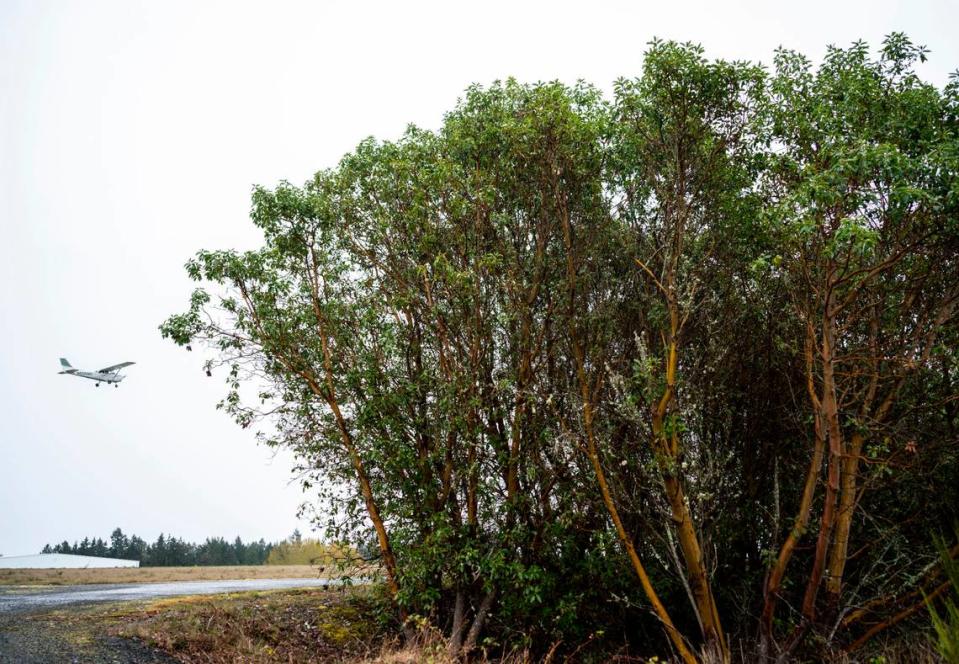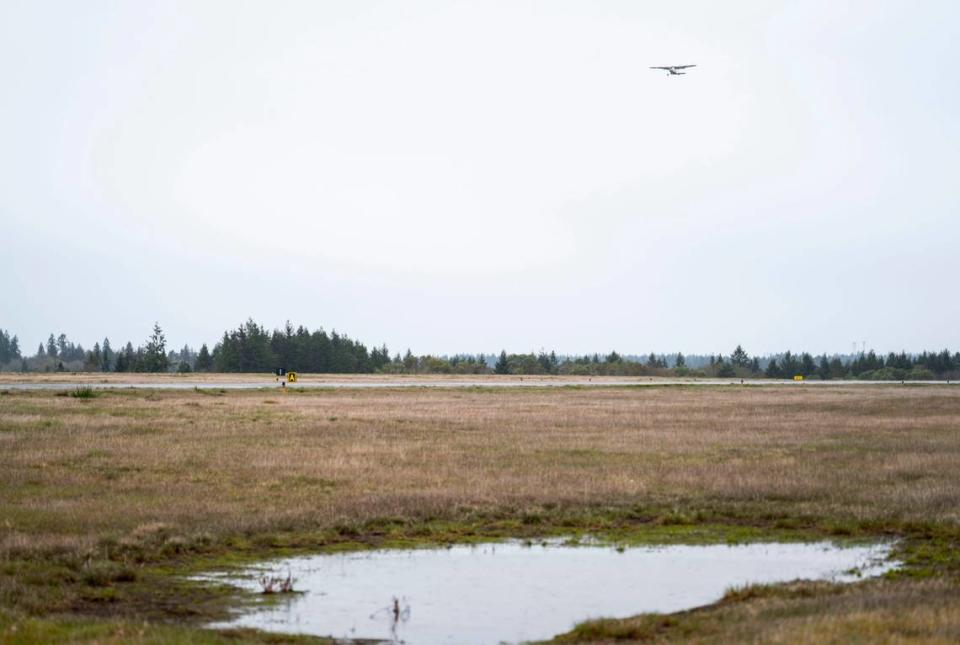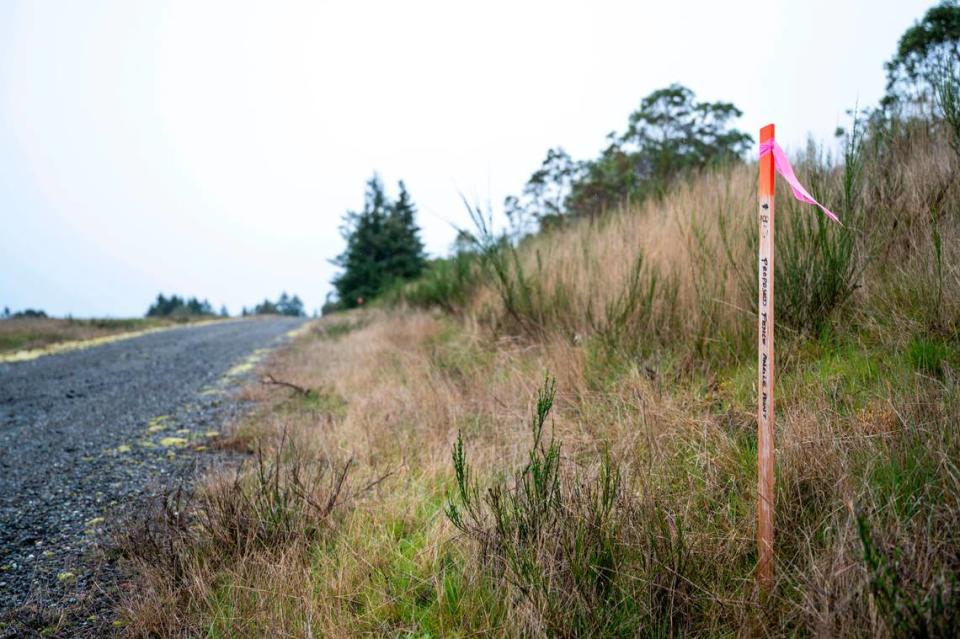FAA agrees to reconsider how many trees it will cut down at the Tacoma Narrows Airport
The Federal Aviation Administration planned to cut down 2,055 individual trees and clear 51.7 acres at the Tacoma Narrows Airport this fall.

After hearing concerns and receiving letters from the public, the FAA has agreed to take a second look.
Local residents raised their concerns about the project at the April 11 Tacoma Narrows Airport Advisory Committee meeting.
Some were worried about an increase in plane noise, destruction of wildlife habitat, reduction in air quality, and the area’s aesthetic.
Then Wednesday, April 19, Pierce County met with the FAA at the Tacoma Narrows Airport.
The FAA has agreed to conduct a Safety of Airspace Analysis to see how the amount of trees being cleared may be reduced, Amanda Smith, a Pierce County spokesperson, told the Gateway Wednesday.
An update will be given in late May, Smith added.
Project history
The airport was previously owned by the city of Tacoma. In 2008, Pierce County took over ownership.
In 2016, the Pierce County Council adopted the airport master plan for the Tacoma Narrows Airport with three projects to make approaches and take-offs safer.
The projects include tree obstruction removal, taxi relocation, and wildlife protection. They’ll be funded through a series of grants from the FAA, Pierce County, and the Washington State Department of Transportation, Smith said.
Obstruction removal
As part of that master plan, the FAA had identified approximately 18,000 trees that intersect what is called “Part 77 airspace.”
“Part 77 airspace” is a flight safety zone around the runway that radiates upward from the airport in a cone shape, Trever Threde, airports and ferry administrator for Pierce County, told the Gateway.
This boundary needs to remain clear of obstacles for planes to operate, Threde said.
Pierce County and consultants perform routine inspections of the runway that are reported back to the FAA as needed, Smith said.
The FAA also has the authority to inspect the runway at any given time, Smith said.
At first, the FAA planned to take down 18,000 trees on airport property.
As Pierce County worked with the FAA to finalize and develop the airport master plan, they were able to take the number of trees from 18,000 down to 2,055 individual trees and clearing 51.7 acres for the project.
That was the plan up until Wednesday’s advisory meeting. Now the FAA will take another look.
Where it is possible, 2,055 individual trees on the property have been identified for removal. Each tree identified has grown into the safety zone boundary or is expected to grow into the boundary.
The 2,055 identified trees are not in one specific area. They’re individual trees across airport property, Threde said. None are on private property.
Individual removal helps retain the surrounding vegetation, Smith said.
Grubbing and clearing of 51.7 acres of forest would occur for trees that require removal, but are in areas so dense that selective removal is not practical, Smith said.
“Grubbing involves a combination of removing entire trees from the airport, leaving branches and removing larger logs, and chipping the trees on-site,” Smith said. “Low, native shrubs will remain.”
Pierce County does not have a total number of trees that would come down in the 51.7 acres of forest, now that the FAA is taking another look.
The 51.7 acres of forest are located primarily north and west of the runway.
All tree removal will take place outside breeding and nesting season, March 16 to Sept. 1, for species including the streaked horned lark.
Obstruction and tree removal is estimated to cost $2.5 million. The work is expected to take place in the fall of 2023 and be completed in late spring 2024.
Concerns the FAA heard
Pierce County Council Member Robyn Denson told the Gateway she’s received concerns from the public about the number of trees that will be cut.
Denson is a member of the airport advisory board, but was absent at the April 11 meeting due to another obligation.
She said she is a big proponent of “measure twice, cut once”.
Denson sent the FAA a letter on April 5. She asked them to take a second look at the number of trees that need to come down and whether some acres could be spared, she told the Gateway on Wednesday.
She explained cutting down the trees is something that is being mandated by the FAA.
“As part of their agreement to provide funding to the airport, there are necessary upgrades to keep us compliant with FAA standards,” Denson said.
“I can’t speak for everyone, but I don’t think anyone ever gets excited about removing trees, and I know all of the benefits of trees: aesthetic, environmental, sound, habitat, all of that,” Denson said. “But obviously safety is the number one concern for everyone. We have to have a safe airport. And if the airport does not meet the FAA standards, improvements need to be done to be in compliance.”
Denson was thrilled to hear Wednesday’s news that the FAA is willing to take a second look at the forested areas around the airport.
“Anytime you take down this number of trees, we just want to be absolutely sure it’s necessary,” she said.
How will cutting down trees affect noise?
Hugh Pratt of Gig Harbor and Aaron Rocksmith who lives in the Point Fosdick area near the airport emailed the Gateway, concerned that cutting trees down will create louder aircraft noise.
“These trees are all we have to protect from an increasingly noisy airport,” Pratt and Rocksmith wrote in a letter they sent to Denson.
As part of the master plan in 2016, Pierce County completed a noise study that looked at the effects of cutting down the original 18,000 trees.
“A noise contour study evaluates how sound radiates from the airport and interacts with the topography of the surrounding areas,” Smith said. “It includes assessments of how noise is perceived in surrounding areas.”
“The noise contour found that there’s no significant change in the 65 day night noise average,” Threde said.
That’s the FAA standard for assessing a nuisance noise level and a non nuisance level.
The study found there would be no substantial change in the noise contours based on this project, Threde said.
Taxiway relocation
Another project is that the airport’s current main taxiway will be moved 50 feet to the east, making the runway FAA approved.
Right now that’s a grassy open area, with one area that includes a stormwater retention pond that will get moved.

By moving the taxiway it gives planes more space between taxiing, taking off, and landing on the runway, Threde said.
The size of the runway won’t be expanding. The only thing moving is the taxiway.
“Expanding the runway is not the intent of any of these projects,” Threde said. “These are all projects that come out of the airport design manual and are requirements for us to safely operate the airport.”
Taxiway relocation is estimated to cost between $6 million to $10 million. This cost will be finalized later this summer when the design is closer to being finalized, Smith said.
These projects will also not change the size or number of aircrafts that come and go from the airport, Threde said.
During this process, they’ll fill in a portion of a storm water pond and re-engineer their storm water facilities to make sure they don’t lose any runoff capability.
The last phase of the project for taxi relocation and wildlife protection is likely to begin in 2026, Smith said.
Wildlife protection fencing
Another part of the project is adding safety fencing around the south and western edge of the runway safety area to prevent any wildlife access to the active runway and taxiways, Threde said.

The east side of the airport is mostly fenced. The west and south sides are partially fenced.
Fencing installation is expected to begin this fall and continue into 2024, Smith said.
The fencing is a permanent safety addition to the airport and is estimated to cost $750,000 to $1.2 million.

